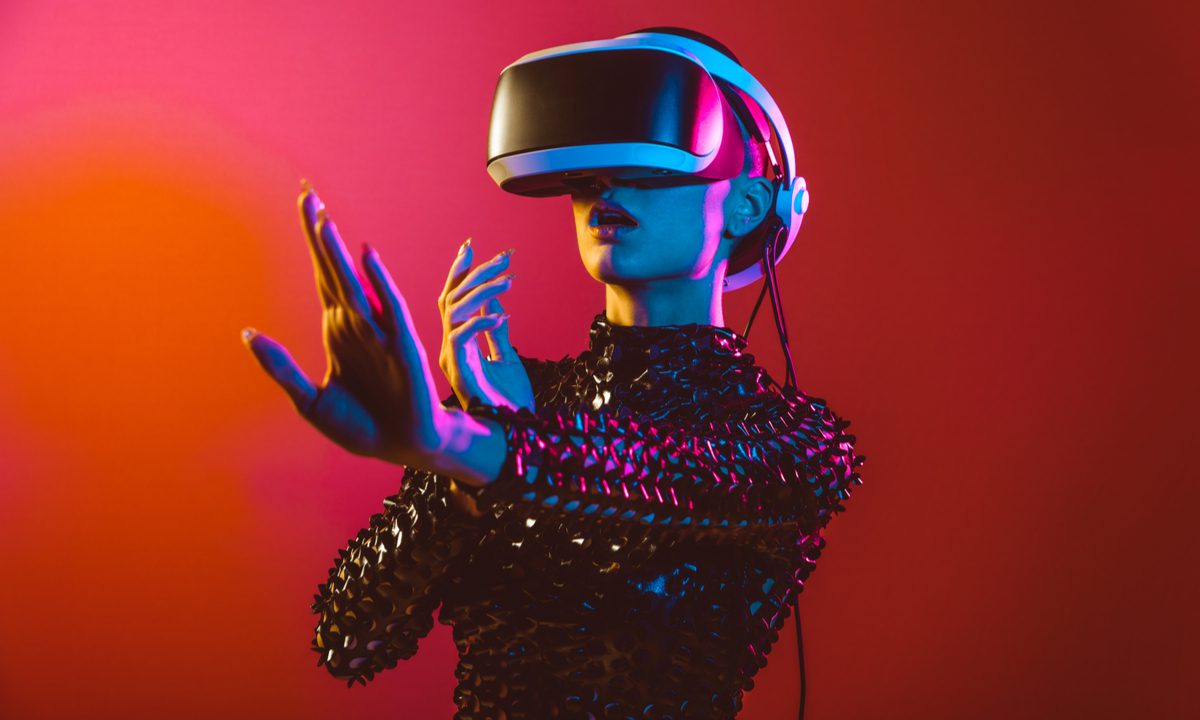
If there was any question that fashion is leading the charge into the metaverse, the 70-plus brands participating in Decentraland’s Metaverse Fashion Week should put them to rest.
And if it doesn’t, tack in fashion bible Women’s Wear Daily’s (WWD’s) extensive coverage of the immersive virtual reality world event — under its “Fashion Show Reviews” section — breathlessly announcing “EXCLUSIVE” reports like “Estée Lauder Breaks Into the Metaverse.”
There are designer shows (although WWD noted that the security guards weren’t having as much luck as their real-world counterparts in keeping attendees off the catwalk), exclusive nonfungible token (NFT) wearable collections (including more than a few physics-challenged designs), sales and giveaways (sunglasses that let you teleport between events), afterparties with live (well, “live”) DJs and plentiful “‘proof of attendance protocol” tokens (unfortunately shortened to “POAP”) to be had.
Fashion brands have been early adopters of the metaverse, with brands ranging from Nike to Gucci to Balenciaga offering NFT clothing and accessories for the avatars that users ride into the 3D virtual worlds to wear, providing the opportunity to flaunt their style. Users can also flaunt their wallets — some fashion NFTs, notably a $4,000 Gucci virtual bag, have outpriced their real-world counterparts.
There was a very wide swath of brands attending, with Metaverse-only designers like Tribute Brand, DressX and Auroboros paired with “notable names like Dolce & Gabbana, Tommy Hilfiger, Elie Saab, Nicholas Kirkwood, Perry Ellis, Imitation of Christ, Estée Lauder, Etro, Hogan, Dundas and others,” WWD reported. Vogue, GQ, Elle and many other fashion titles have covered the metaverse fashion scene and business.
Growing Interest
While that part of the timing was obviously intentional, Decentraland Foundation creative director Sam Hamilton told WWD it was also a factor of industry interest.
“We’ve done fashion shows in the past with our community of creators, and we saw a massive wave in [avatar] wearable sales last year — $500,000 in user-generated creations sold on our marketplace,” he said. “We could see the fashion industry taking note, being disrupted and starting to ask questions, and we felt a wave of fashion coming into the metaverse. So, we thought it was the right time to onboard brands.”
He added, “The amount of interest we’ve had from brands has been overwhelming.”
Nor is it all couture. Forever 21 was in attendance, and Nike was quick to enter the metaverse.
Besides designer brands, retailers are following suit. One highlight of Decentraland’s Metaverse Fashion Week was the opening of a virtual outlet of upscale British department store Selfridges in the metaverse’s Fashion District — a neighborhood set aside for everything wearable.
The first meta department store in the history of #web3 and anybody can visit! Interact as a guest or attach your crypto wallet to access all features. You might even recognise a friendly face on the door. @decentraland #MetaverseFashionWeek pic.twitter.com/62IXAYKnv3
— Selfridges (@Selfridges) March 24, 2022
Plenty of pop-up stores joined the fray, although others are setting up shop for good in the Fashion District. Estée Lauder will be launching its “beauty headquarters” there on the final day of Decentraland’s Metaverse Fashion Week.
Not-so-Virtual Reality
But the biggest news, from a metaverse commerce development perspective, came from Tommy Hilfiger, who, WWD noted, had “digital-to-physical products were available for sale, with shipping to real-world addresses listed at two to four weeks.”
It’s not the only example of virtual-to-real world sales. Blockchain developer Boson spent $704,000 for a strip of Fashion District land, which debuted a virtual fashion mall last year where virtual-to-real NFTs are for sale.
“This partnership with Decentraland is the first step towards Boson Protocol integrating its technology into every virtual world and every game, to realize its vision of open metaverse commerce,” Boson co-founder and CEO Justin Banon said in an interview with CoinDesk.
On the other hand, there’s plenty of not-so-real virtuality, ranging from the building and structure designs to the way people are treated.
The main “catwalks” are an example of where the virtual departs from the real world, as a stadium-sized main fashion show venue features a giant figure-eight.
“We have celebrities who come into Decentraland, and they may be there, but there’s no VIP treatment,” Hamilton told WWD when asked about catwalk seating — traditionally a show of how powerful you are. “We’re treating everyone the same. And the way Decentraland is set up everyone will get a front-row seat.”